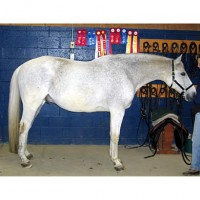
Gravity. It’s not just a good idea… it’s the law! This goes for horses and dogs as well as people. Pretty much all activity on earth is influenced by gravity, and the forces generated by gravity are the primary source of most athletic injury. However, most injuries aren’t caused by running or jumping, as you would think. They actually originate with how the person or animal uses their body while standing. In horses, this is especially critical, because they spend 20-22 hours a day standing: standing and eating, standing and sleeping or just plain standing.
What goes into posture?
Did you ever think about what it takes to stand up? You have to organize your legs, joint by joint, engage your spine, support your head and at the same time, keep the whole apparatus from falling over. All these tasks are done unconsciously by postural control centers in the brain, which process information about the body’s position in space. The nerves that receive information and take it to the central nervous system are called afferent nerves, and a special class of them are known as “proprioceptors.” Proprioceptors tell the brain where different parts of the body are: feet on the ground, head in the air, how much each joint is bent, etc. The most important information needed to generate posture comes from the position of the head and upper neck, the contact between the feet and the ground surface, and the position of the temporo-mandibular joints (TMJ), or jaw joints. These areas are very rich in proprioceptors; information transmitted to the postural control centers from these three regions will generate the correct standing posture needed to keep the animal upright.
Continue reading What You Must Know about Equine Posture, by Karen Gellman, DVM, PhD